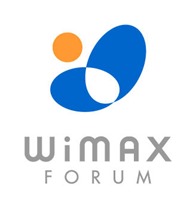WiMAX Forum has announced the publication of “WiMAX Forum® System Profile Requirements for Smart Grid Applications”.
This document codifies work done on WiGRIDTM, an optimized IEEE 802.16 system profile being developed by the WiMAX Forum against the requirements of the Utility companies. This set of requirements was assembled by the WiMAX Forum’s Smart Grid Working Group, which is composed of technical representatives from major electric power utilities, WiMAX vendors and industry experts.
“Approval of the WIMAX System Profile Requirements for Smart Grid Applications document establishes WiMAX as a technology capable of meeting the demands of Smart Grid wireless application,” stated Eugene Crozier, 1800 WG, UTC Canada and Chair of the WiMAX Forum’s Smart Grid Working Group.
“The publication specifically provides the implementation details to meet typical utility use cases and describes the WiMAX specifications required of equipment used for electricity management. It was developed by manufacturers and utilities working together, and is an important step in the road to standardization and certification of IEEE 802.16 products for use in utility networks.”
The proposed WiGRID System profile is an Ethernet version of IEEE 802.16 that includes numerous new features that allow uplink centric data communications, lower latency, extended range, and enables the use of new frequency bands that various Utilities hold, namely 1.4 GHz, 1.8 GHz, 2.3 GHz, 3.65 GHz and 5.8 GHz.
“Electric utilities require nearly ubiquitous telecommunications coverage over their service areas to enable ‘Smart Grid’ applications,” said Paul Senior, Vice Chair of the WiMAX Forum Smart Grid Working Group andCTO of Airspan Networks.“WiGRID technology provides a reliable wireless communications medium to ensure Smart Grid functionality, and is an excellent complement to wireline technologies already in use. Our new requirements document provides utilities and vendors with the information they need to advance this revolution in field area networking technology.”
The WiMAX Forum’s mission is to facilitate the adoption of WiMAX and WiGRID technology across the world and ensure that industry products are interoperable. The publication of the WiMAX Forum® System Profile Requirements for Smart Grid Applications document is the latest step in the organization’s continuing effort to support utilities across the globe.
Wateen has been at the forefront of advocating the adoption of smart grids for electricity and gas to resolve the issues facing the consumption of energy in Pakistan.


